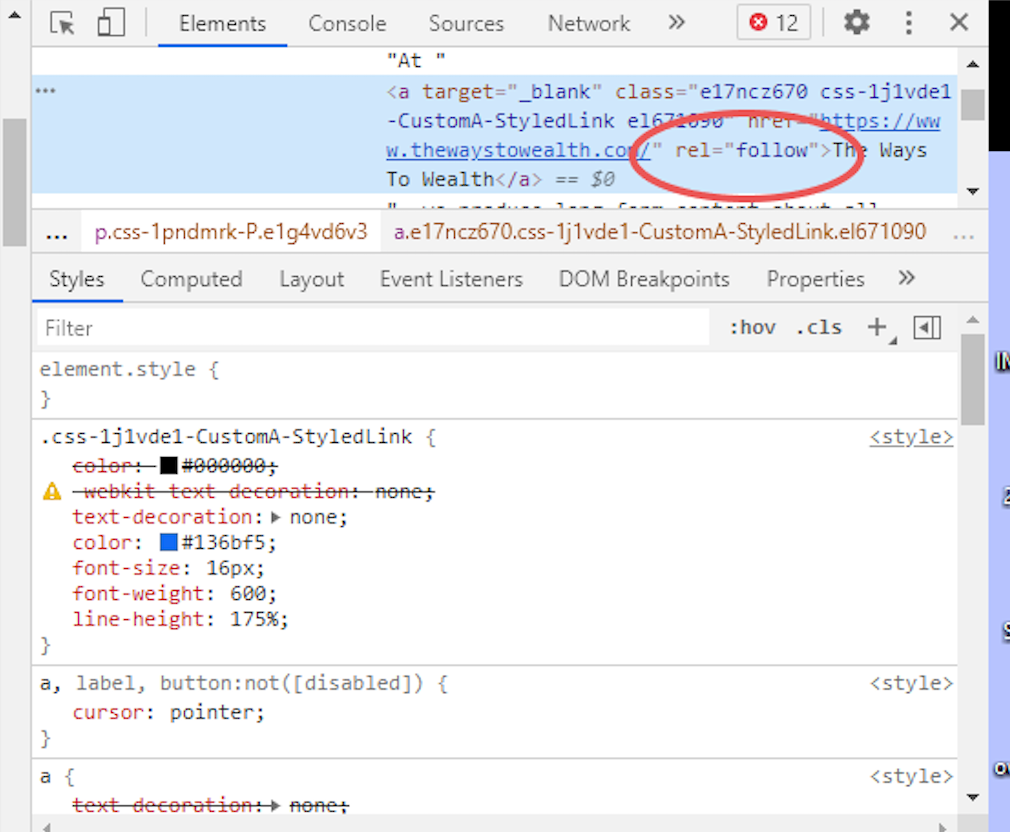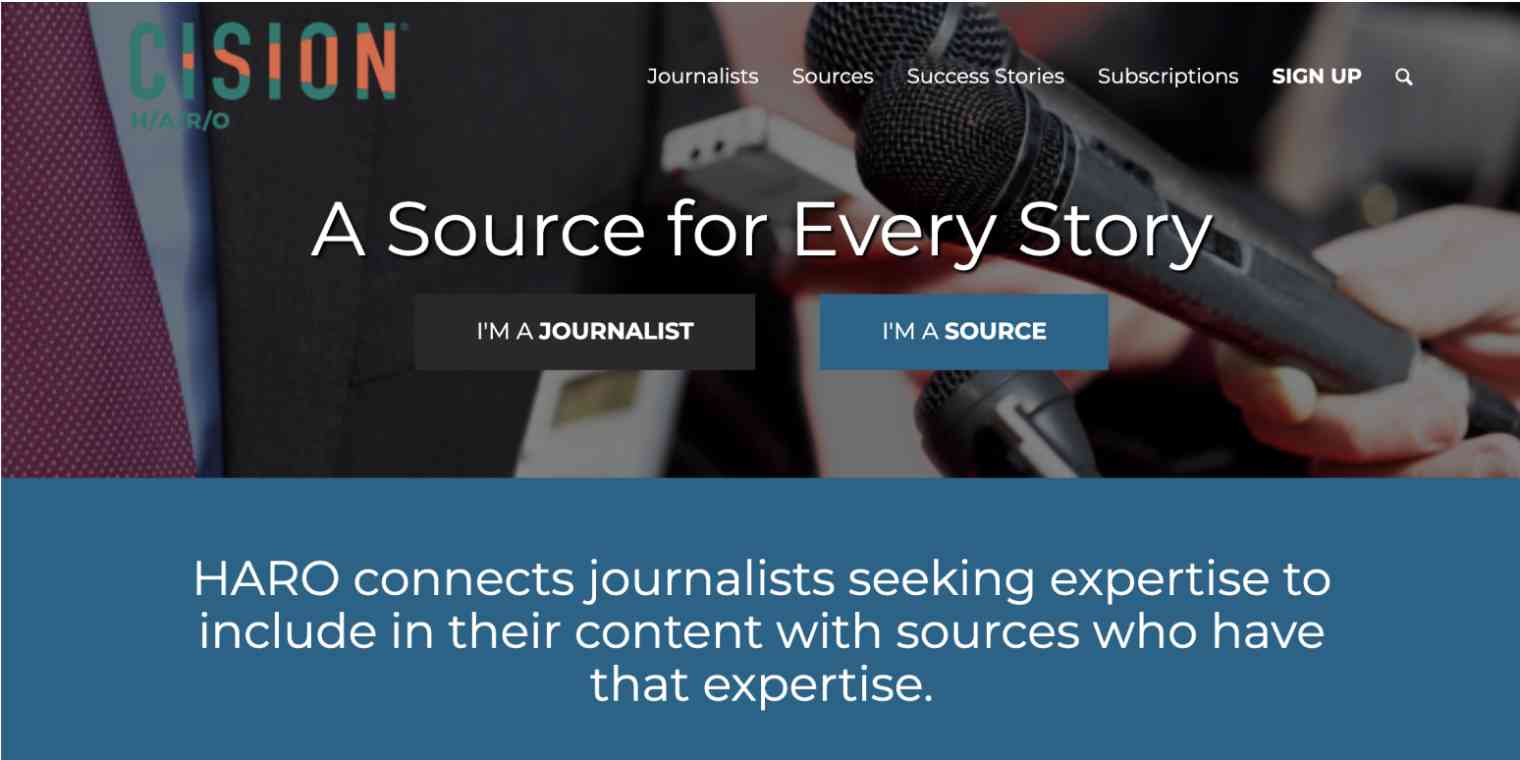You've likely spent some time reading about and focusing on on-page SEO: optimizing your site to be sure Google will like it. But backlinks (links to your page from another site) are another valuable way to help people find you: not only do they send referrals your way, but Google also considers backlinks when ranking pages because they demonstrate a level of trustworthiness.
There are lots of ways to get backlinks: collaborate with other businesses, write guest posts, and of course, just offer good resources that people want to link to. But one of the best and easiest ways to get backlinks for small business SEO is through HARO.
A deep dive into local search engine optimization (SEO) is well beyond the scope of this article, but there are certain features every local business's website should have these days. Here's how to complete an SEO audit to help grow your business.
What is HARO?
HARO is an acronym for Help A Reporter Out, a site owned and operated by the PR software company Cision. It connects journalists, bloggers, and publishers to the sources they need to write their articles. Here's how it works: the journalist posts a "query," saying what they're looking for expertise on or a quote about, and then anyone can submit a "pitch," answering the question in the query or offering to speak with the journalist.
Often, the best sources are small businesses: you have expertise in your niche, and writers need that expertise to create compelling content. If someone likes your pitch, they might quote you and talk about your business—that means exposure in some of the largest and most trusted publications. It's amazing for PR, and it's an easy way to get backlinks.
The best part: it's quick. You're only going to respond to queries you're really an expert about, which means it doesn't take much time. All you have to do is answer a few of the journalist's questions. The trick is understanding who to pitch, when to pitch, and what to include in your pitch.
Building a backlink profile with HARO
Not all backlinks offer the same benefits for SEO. There are different types of links that publishers can use to link to your business, and each publication has a different domain rating. Quality matters, so you'll want to be sure you know what kind of backlink you're getting—and who's giving it to you.
Dofollow vs. nofollow links
Dofollow links are links that Google uses to rank a website's trust, quality, and authority. If a link is dofollow, it lets Google know it's pointing somewhere important—the linking site owner wants Google to make the connection between their site and the site at the other end.
Nofollow links used to have no influence at all on Google's algorithm, but in March 2020, Google changed this a bit, so they now treat nofollow links as "hints." This seems to indicate there's some influence from nofollow links, but we don't know for sure how Google reads them, so you want to focus on the dofollows.
You can look at any site and get a general idea if they give nofollow or dofollow links by looking at the links in some of their other articles. Here's how to figure out if a link is dofollow or nofollow in Chrome:
1. Hover over the link, and then right-click on it.
2. Click Inspect from the menu.

3. The Chrome Elements panel pops up, and you can see toward the top of the screen whether the link is dofollow (rel= "follow") or nofollow (rel="nofollow"). If there's no rel attribute at all, it's a dofollow.

Make sure to check multiple links on multiple articles in the publication. Some publishers have different requirements for dofollow vs. nofollow links, meaning that the same site might offer both, depending on the situation.
Domain rating
So you want your links dofollow, but you also want high authority links—that is, links from sites that have authoritative backlink profiles already.
There are various ways to look at a site's authority, but Ahrefs' domain rating (DR) score is a pretty reliable baseline. You can search for any site's DR for free on Ahrefs. Just keep in mind that it's not perfect. Any SEO service's metrics can give you an idea of how Google will see a site's authority, but they're not behind the Google curtains, so it's really just an educated guess.
The higher the domain rating of a site, the more valuable it will be for you to have a backlink on it. A DR 50 or higher is what you should be looking for.

Again, HARO doesn't tell you if a publication offers dofollow or nofollow links, and it doesn't tell you the DR of the site that's writing the article. You have to figure that out yourself using tools like Chrome's Inspect feature and Ahrefs' DR scoring. If you want a cheat sheet, though, a relatively new app called Sourcery collects incoming HARO queries and sorts them according to DR and dofollow links to help businesses figure it out more quickly and reliably.
How to use HARO
When you sign up for HARO, they'll send you all the queries via email three times a day during the week. They're super basic: just a list of query titles (sorted by category) with links to learn more.

Each query will have a bunch of information: the name of the writer and publication, a summary of the article they're writing, the deadline, and the query itself. There's also a link to an anonymized email address where you'll send your pitch.
Then there's a requirements section: this is where the writer can put any must-haves for sources. Usually this involves special qualifications or experience that give the sources special insight into the topic.

Here are a few tips that have served me well when pitching on HARO:
Only pitch if you meet the requirements. Your pitch will be ignored if you don't have the relevant background and knowledge. There are dozens of queries a day, which means it's likely you'll find plenty that suits your expertise.
Pitch often. Of course, you shouldn't be waiting for the perfect match. Because there are so many people pitching, you need to throw a lot at the wall before something will stick. It might seem time-intensive at first, but pitches shouldn't take more than 15 minutes to put together, and they'll get quicker as you do more and build up a library of snippets.
Pitch as soon as queries come out. As you can imagine, all these pitches can fill up a writer's inbox quickly. You have to assume that they probably pick the first great sources they find that fulfill the requirements for their article. If you don't have time to scroll through every query, you can use automation to pare these emails down. Use Gmail filters so you only see queries with certain keywords, or use Zapier to get a text message, Slack message, or other notification whenever something super relevant comes through.
Zapier is a no-code automation tool that lets you connect your apps into automated workflows, so that every person and every business can move forward at growth speed. Learn more about how it works.
How to write a HARO pitch
To understand how to craft a pitch that will be considered by a journalist, let's look at a sample.

Here's what you should notice:
In the first section, the writer tells the journalist their name, role, and business, and then follows that with a sentence on why they're qualified to answer this query. Journalists want to know upfront if someone has the background they're looking for. The more obvious you make the relevant information, the more likely it's going to compel the journalist to read the rest.
The body of the pitch uses short, quotable sentences to address all of the journalist's questions from the query. There's a balance here: you need to be substantive enough to provide value to the journalist's readers while also being concise enough to be quoted.
Formatting matters: putting quotable sentences in bold helps them pop and makes it easier for them to see the gist of your pitch without having to read the whole thing. Anything you can do to make it easier for the journalist to find quotes, the better. But I suggest avoiding bullet points. Bullets veer away from the natural dialogue that journalists tend to use for their quotes, making them harder to plop right into an article.
The conclusion to the pitch should thank the journalist for the opportunity to answer their query and let them know that you're available if they have other questions. Follow-up questions are rare, but when they come, it's another chance for you to give a good substantive answer and increase your likelihood of getting quoted and earning a backlink.
HARO can connect people like you, who have expertise to offer but might not have a direct connection, to publishers. That means you don't need to hobnob with the right people to get your name out there, and you don't need to spend years trying to perfect your homepage so that somebody, anybody, will link to it. All you need is a few minutes and the knowledge you already have in your brain.





